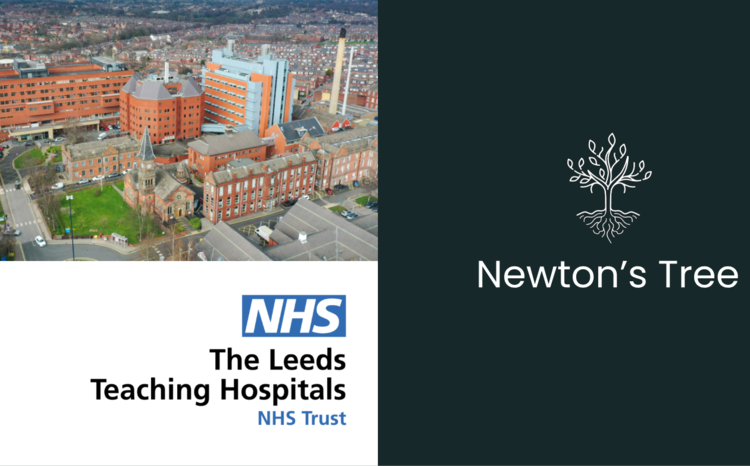Hyland seeks to capitalise on machine learning’s potential
- 13 November 2017

Staff from Hyland Software enthused about the potential of machine learning in healthcare as they displayed the firm’s new suite of enterprise imaging applications at the OnBase Summit in Berlin last week.
Speaking to Digital Health News, executives at the US-based content management firm discussed their ambition to offer clinicians all information relating to a patient from a single interface, with shared access across NHS trusts on a nationwide basis.
The Hyland Healthcare product suite, which was formally announced in October, is a toolbox of content management solutions allowing clinicians to capture, view and share both clinical documents and medical imaging from a single cloud-based portal. The company acquired the software suite through its purchase of Lexmark’s Perceptive Software earlier this year.
As well as patient notes, insurance forms and consents, the solution allows clinicians to aggregate MRI scans, X-rays, radiology exams, surgical photos and videos, with the aim of providing clinicians with as complete an overview of a patient’s medical history as possible.
“Our strategy is to help organisations to not just manage their information but also improve their workflow efficiencies,” Susan deCathelineau, Hyland’s vice president of global healthcare, told Digital Health News.
“Whether it’s documentation from a visit, an ECG result, or medical imaging from a study that was performed, we have the capability to have all that viewed through one location for the clinician, to access when they’re treating the patient and [help them] make informed decisions.”
Hyland is working with more than 30 NHS institutions, including University Hospitals Southampton NHS Foundation Trust, Wrightington, Wigan and Leigh NHS Foundation Trust, and Liverpool Heart and Chest Hospital.
A big appeal of its technology is allowing clinicians to cut back on their use of paper – a long-standing and oft-shifting goal for the NHS.
Kevin Starling, a consultant working with Hyland, said: “Some progress has been made on going paperless but there’s still a huge amount to do. EPRs are becoming more prevalent in the UK. Where we fit in is we’re helping trusts to eliminate paper.
“To digitise that is a huge job. We have some capture technology that allows that to be automated to a certain extent and categorised.”
Hyland’s technology allows healthcare organisations to capture and integrate all medical imaging content with their existing EHR and PACS.
These images can then be placed in a single vendor-neutral archive (VNA), allowing them to be accessed and viewed via the cloud by any NHS organisation using Hyland technology.
By integrating a vast range of clinical documents and images, the company eventually hopes its applications will provide a stepping-stone to preventative healthcare capabilities by allowing patient data to be interrogated by artificial intelligence (AI) algorithms.
Bill Priemer, CEO of Hyland, explained that this capability will not only allow clinicians to better identify patients at risk of long-term diseases, but alleviate the pressure on hospital staff while simultaneously enabling more accurate decision-making.
“Our doctors and clinicians are amazing, but [because of] the complexity of the diagnoses and the decision they have to make – of course they’re not infallible, how could they possibly be?
“It’s not just efficiency and having all the information there – it’s enabling computers and the promise of all this technology to assist clinicians in making sure they make the right diagnosis and the right decisions.”
But there’s a lot of work to be done before that can happen, and Hyland’s executives’ first steps are an attempt to break down the innumerable IT silos in the UK healthcare industry and collate medical images into a vendor-neutral archive (VNA), available to NHS workers on a nationwide basis.
“Sharing information is a key point,” said DeCathelineau. “When we can get to the state of digitising, it facilitates not only the consumer to access this information but [sharing] provider to provider.”
Once this has been accomplished, trusts will be able to subject their shared database to AI algorithms which – hopefully – will be able to identify healthcare trends and provide insight to clinicians.
“It’s still very new,” said Priemer. “What we’re working on right now is getting all of those medical images into a single archive. The problem today is that all of those images are stored in their proprietary formats in their proprietary PACS (picture archiving and communications) systems.
“Even within a single hospital – radiology, cardiology, oncology – those are all separate systems. We’re trying to pull out all those images into a central archive. That’s the first thing we’re trying to do, and that’s going to take us several years just to do that.”
Even so, Starling suggested that machine learning capabilities were “coming along strong”.
He added: “We have all that data in there, and that is one of the things that we are moving towards. There are obviously lots of other companies that are doing AI, but you have to have the data [in a single archive] to interrogate to be able to do that… There’s a definite potential for cost-saving and resource-saving as well as patient care. It’s definitely coming.”



